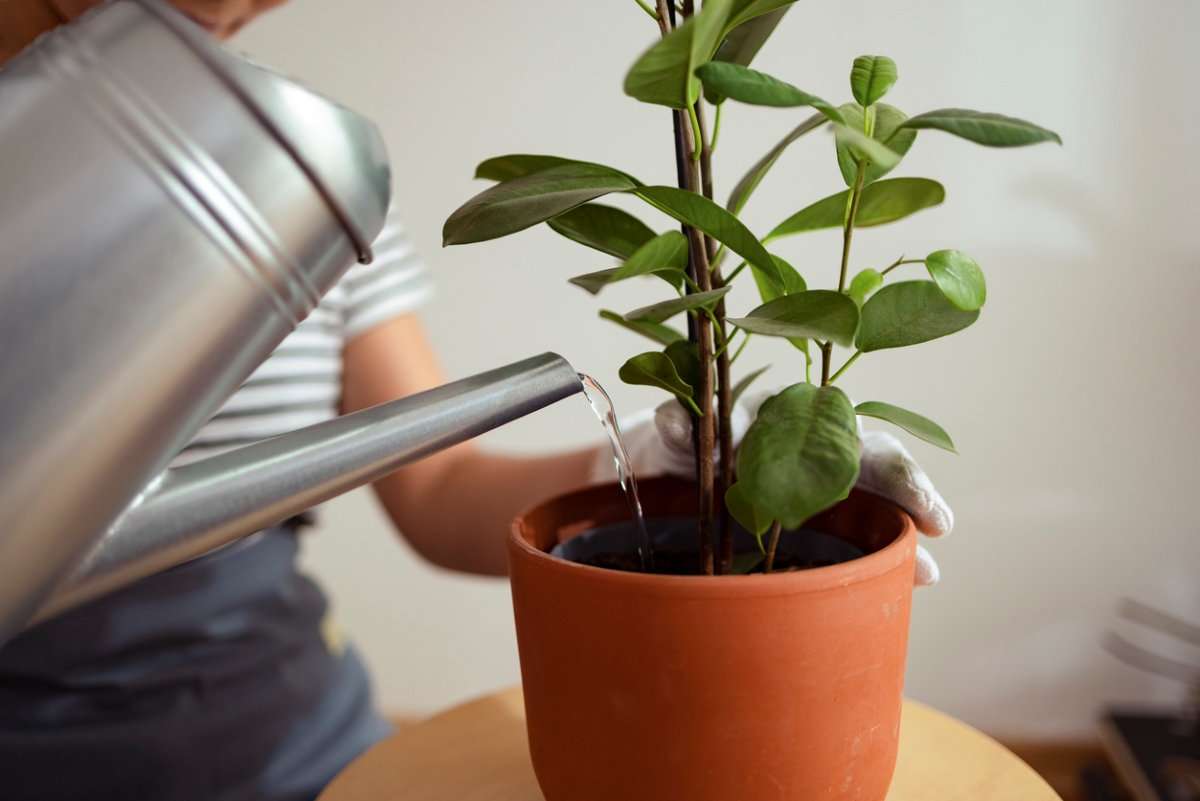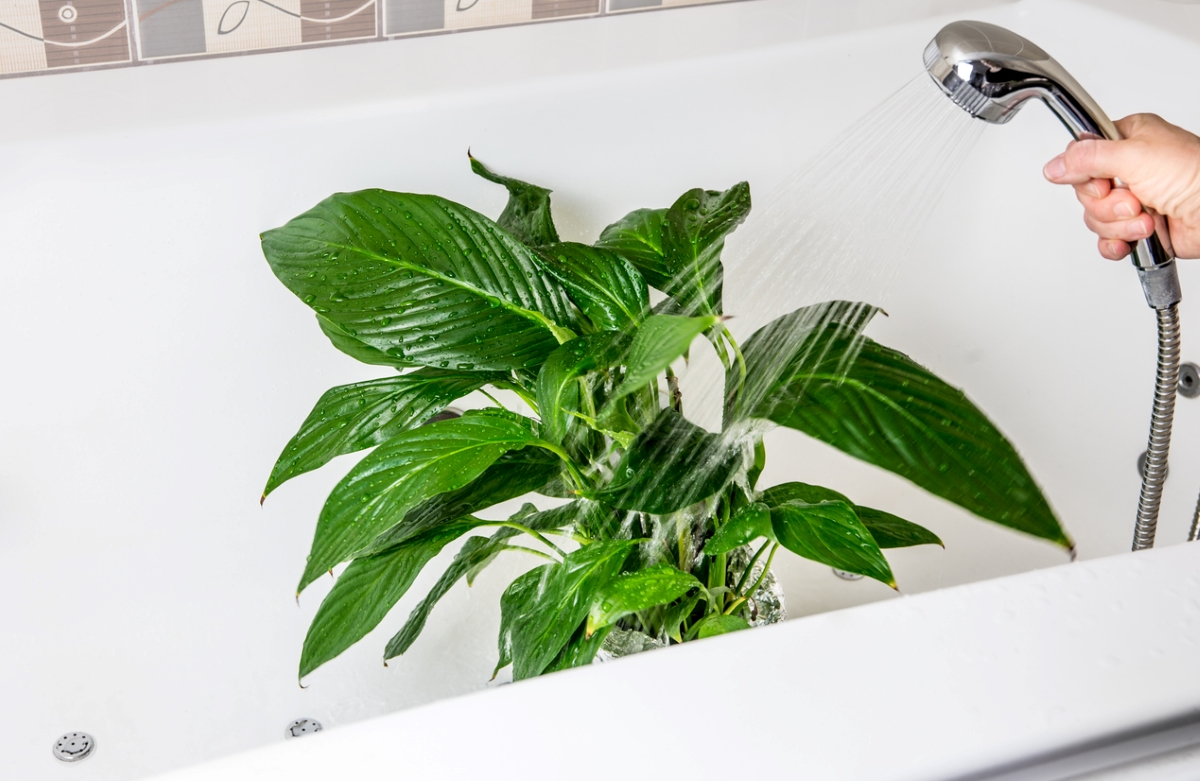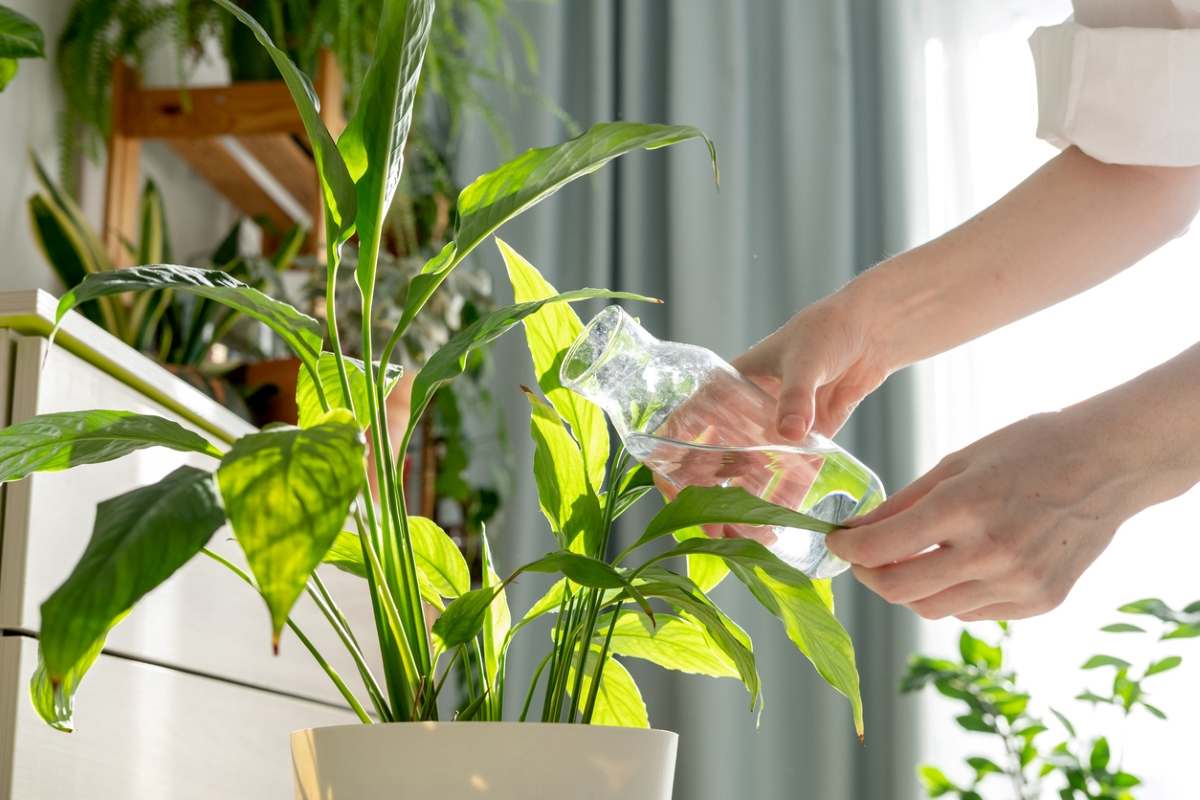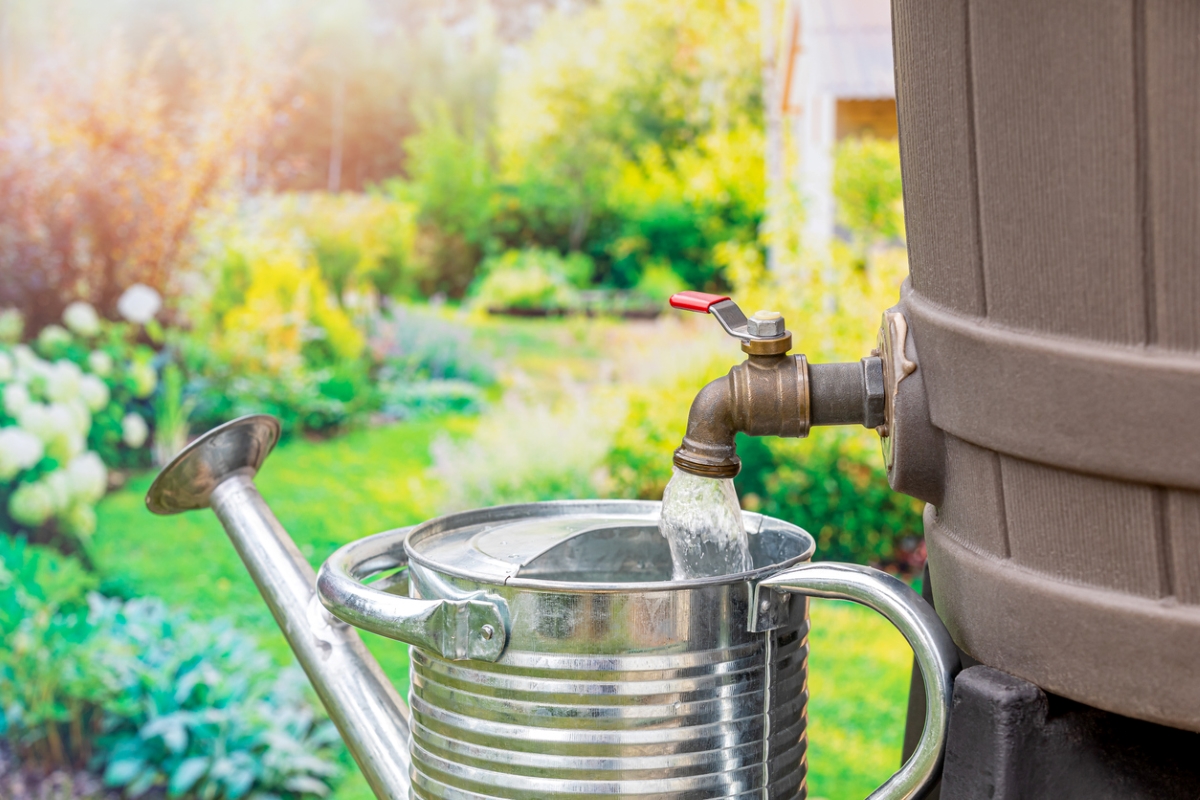

We may earn revenue from the products available on this page and participate in affiliate programs. Learn More ›
Most gardeners know about the Goldilocks rule of watering plants: not too much, not too little, just the right amount. Signs of overwatering include yellow, brown, or wilted leaves, mushy stems, moldy soil, or fungus gnats, particularly if there’s inadequate drainage. Underwatering plants can result in dry, brown, dead leaf tips, wilting, and dry soil.
But does it matter what kind of water is used? The kind of water you use can make a big difference for even low-maintenance plants.
Hard vs. Soft
Hard water—particularly well water—contains excess minerals, such as calcium and magnesium. These can build up a layer of scale or rust on the surface of the soil that prevents the water from penetrating the soil.
However, water that has been processed through a water softener to remove excess minerals isn’t any better because it introduces too much sodium. Salt can build up and choke the roots, or trick the plant into thinking it has taken up enough water when it really hasn’t.
Hot vs. Cold
Whatever source the water comes from, it should always be room temperature when watering plants. Both extremes, very hot or very cold, can damage the plant’s leaves and roots, and possibly even cause shock. Cold water at the roots can cause wilt or root shock, stunt the plant’s growth, or even kill it – especially if it’s a tropical plant.
Tap water

Tap water is usually fine for the best houseplants. However, some plants are sensitive to the chlorine, fluoride, lead, and pathogens often found in municipal tap water.
To remove chlorine, let tap water sit for 24 hours before use. Alternative methods include boiling (and then cooling) tap water, adding 1-2 drops of hydrogen peroxide per gallon of water, or repeatedly transferring water from one container to another so the chlorine dissipates.
Filtered water
Filtering water is another way of making tap water safer for houseplants. Activated carbon filters, like those found in some of the best faucet water filters, can remove chlorine, asbestos, benzene, toxic metals such as lead and mercury, bacteria, and sediment, without extracting the essential minerals plants crave.
However, activated carbon filters cannot remove fluoride, typically found in municipal tap water and harmful to some plants, or the minerals and salts commonly found in hard water.
Distilled water

A form of filtered water that is purer than rainwater, distilled water has been boiled and the vapor condensed. This eliminates harmful contaminants, impurities, chemicals, and metals. In a study conducted by the National Student Research Center, plants watered with distilled water had better growth and more leaves than those watered with tap water.
However, distilled water lacks beneficial minerals houseplants need, so supplementation with a balanced fertilizer for indoor plants is necessary to overcome nutrient deficiency.
RO water
Reverse osmosis is another form of filtration that removes chlorine, heavy metals, dissolved solids, salts, herbicides, and pesticides. It’s so pure and contaminant-free that many botanists consider it the best water for plants, especially sensitive plants like violets and orchids.
Downsides of RO water include cost and the removal of all beneficial minerals such as magnesium, phosphorus, potassium, and calcium. Additionally, the process makes the water acidic, which can alter the pH balance of the soil.
Rainwater

Many gardeners consider rainwater harvesting the best option to supply houseplants because rainwater is neither too hard nor too soft, it doesn’t contain chlorine or other chemicals like tap water does, it doesn’t have minerals like well water has, and it doesn’t have sodium like softened water contains. Not only is rainwater clean, it’s also free. But before putting it on plants, it should be allowed to warm up to room temperature.
